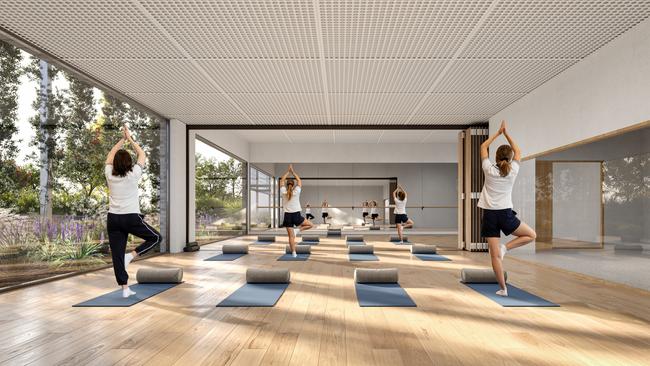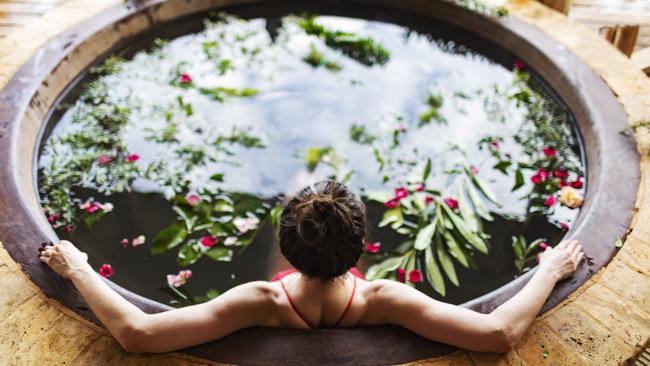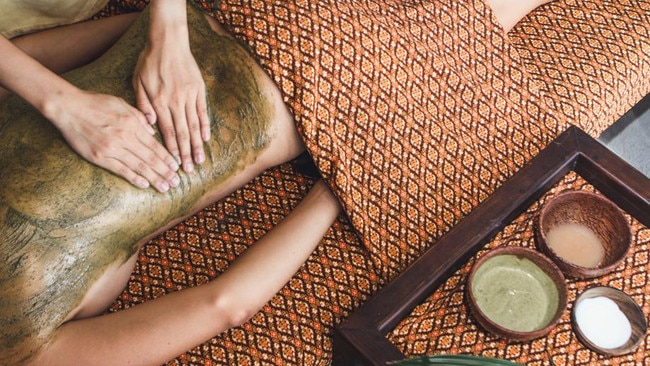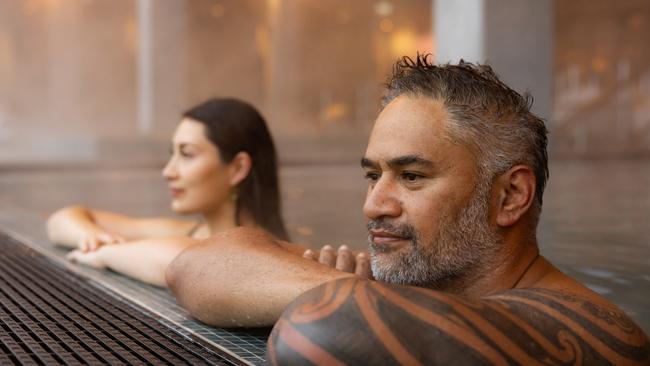Wellness trends that will dominate in 2025
2024 saw the rise of wellness trends like icy baths and salmon sperm injections. Which trends deserve to make the cut in 2025?

The era of wellness is truly in its prime. It’s a cultural trend that has sent consumer demand for health, fitness and travel services soaring. Industries have been more than willing to respond. McKinsey estimates the current global wellness market at upwards of USD$1.5 trillion, with annual growth of five to 10 per cent.
Moves towards perfecting the ideal lifestyle abound – from Apple’s latest iteration of the Apple Watch including new sleep apnoea tracking features to ‘designer vagina’ cosmetic procedures, and $165,000 per-week wellness retreats to remedy C-suite burnout.
While there is no shortage of wellness trends across the internet and among the health and fitness industries, the wealth of choice can be overwhelming for individuals. According to the 2024 Global Wellbeing Report, a survey conducted by wellness brand lululemon and managed by Edelman Data & Intelligence, 89 per cent of participants reported taking more action to improve their wellbeing now than they were a year ago. However, it was also recorded that the pressure of improving wellbeing – by balancing physical, mental and social elements – is leading people to burnout more than ever. Two in 3 participants reported experiencing wellbeing burnout, feeling powerless to improve their health.
With this in mind, wellness brands and service providers have turned their focus to offerings that relieve consumers of the burden of having to make health and fitness decisions in isolation. This is a trend that is set to grow as the notion of ‘longevity’ takes over the wellness section in 2025, according to a report by Euromonitor International looking at the ‘Top Global Consumer Trends 2025’. Longevity in wellness encompasses engaging in activities that seek to improve health, fitness, nutrition, beauty and sleep outcomes.

This integrated approach to wellness is not only being taken up by individuals but also influencing corporate culture. At every level of the corporate ladder, workplace burnout has been reported by 48 per cent of Australian workers, which is seven per cent higher than the average globally, according to the Gallup 2024 State of The Global Workplace Report. There has been unprecedented demand among C-suite executives for luxury rehabilitation clinics, which claim to balance a clinical focus with holistic offerings to combat the effects of work-induced stress.
Across the board, integrated wellness services are attempting to fill the wellbeing burnout gap created by the sheer vastness of a growing industry. This all-in-one approach has seen traditional gyms increasingly come into competition with holistic wellness centres where offerings encompass alternative therapies and mindfulness services, like IV hydration therapy and sound healing. Wearable devices like Apple and Garmin watches are being adapted to include more real-time fitness tracking to satisfy a consumer desire to better understand their own bodies. Even the tourism industry has made its foray into wellness culture, offering travel itineraries based around mindfulness retreats and walking tours — for those who can afford it.
Below are five growing wellness trends to follow in 2025.
5 health and wellness trends to follow in 2025
1. Wearable technology
At the helm of rising wellness trends has been wearable technology. With increasing advancements in AI and the ubiquitousness of individualised technology, these devices give real-time prompts based on physical data. These features include tracking heart rate, distances walked, calories burned, as well as performing electrocardiograms.
Some watches, like those created by Garmin and WHOOP, are more readily geared to being fitness trackers, and are preferred by individuals who train regularly or partake in activities such as triathlons. Other products made by brands like Fitbit, Samsung, and Apple, are designed to for more general use.
In recent years, wearables have undergone even further development to personalise user experience, engaging users to partake in app-based challenges. Despite growing concerns about users’ data privacy and accuracy, the growing wearable technology market suggests trust in these devices is not on the decline.
Matthew Ahmadi, deputy director of the University of Sydney Mackenzie Wearables Research Hub, does however warn that there should often be an intermediary between the person wearing the device and the data that is generated.
“On the simplest level [these devices] can absolutely be used as a motivational tool to help someone reach certain goals they have set,” says Ahmadi. “This data needs to be given to the health professional who can understand what information is relevant, and then give feedback to the patient they’re treating.”
2. Lower alcohol consumption
Younger people are showing an interest in health and fitness in growing numbers. In the Millennial Global Wellbeing Report, 76 per cent of Gen Z and 71 per cent respondents stated they feel more pressure to support their wellbeing. A more significant wellness focus amongst younger generations has impacted overall levels of alcohol consumption, with more people turning toward remaining sober on a night out. Between 2022 to 2023, the proportion of young people who were drinking alcohol monthly decreased from 34 per cent to 29 per cent, according to the Australian Institute of Health and Welfare.
Alcohol can detrimentally affect sleep quality, mood and behaviour, and long-term physical health. With the turning tide toward wellness culture, the sober-curious movement among younger generations is on track to pick up even further momentum in 2025.
3. Holistic wellness centres

Going into 2025, more wellness centres will focus on catering to every aspect of health, whether physical, mental or spiritual. The growth of these all-in-one wellness hubs reflects growing consumer demand for health solutions that provide them with a better understanding of their body as a whole, rather than traditional physical fitness-only offerings. Per lululemon’s Global Wellbeing Report, individuals who take group fitness classes purport to experience 15 per cent higher wellbeing. Not only have gyms begun to offer more group classes but these ‘wellness centres’ are expanding their ambit to include spa, nutrition and mindfulness services.
In many wellness centres across Australia and internationally it is now common to see infrared saunas, cold plunge pools, cryotherapy and mild hyperbaric oxygen therapy. These wellness solutions are aimed at catalysing the body’s recovery post-workout.
This move to providing an all-encompassing and seamless member experience means the guesswork is often taken out of the wellness equation. By having access to a hub where you can exercise, recover and engage in mindful self-care, it is easier for individuals to reduce their concerns regarding the maintenance of a healthy work-life balance.
4. Wellness retreats

Gone are the days of wellness retreats being mere weekend getaways. These rehabilitation-type facilities now come with professional, personalised clinical support for those experiencing serious burnout. With C-suite executive burnout on the rise, five-star wellness retreats are on the up to support growing demand.
With in-house health professionals and medical staff, luxury clinics across the globe offer short-term programs to curb mental health conditions from addiction to anxiety and depression.
5. Wellness tourism

There is no better time to focus on wellness than while travelling. And it’s a trend the tourism industry has been willing to embrace. According to the Global Wellness Institute (GWI), wellness tourism is projected to hit $1.4 trillion by 2027.
On average, international ‘wellness tourists’ tend to spend 41 per cent more while travelling than the typical international tourist. This willingness to splurge on wellness experiences, whether at hotels or through experience-based travel itineraries, is a trend the tourism industry is increasingly catering to. Hotels have introduced holistic wellness into the guest experience with more comprehensive spa programs and amenities dedicated to both physical and mental health.
Experience providers and travel agencies have, too, shifted their itineraries to include offerings like wellness cruises, silent retreats, and mindfulness packages.
Even airports such as San Francisco International and London Heathrow have moved with the wellness zeitgeist, introducing spaces dedicated to yoga and meditation. Some airport lounges have taken luxury to the next level with fitness programs, massages, and Peleton spin training.



To join the conversation, please log in. Don't have an account? Register
Join the conversation, you are commenting as Logout